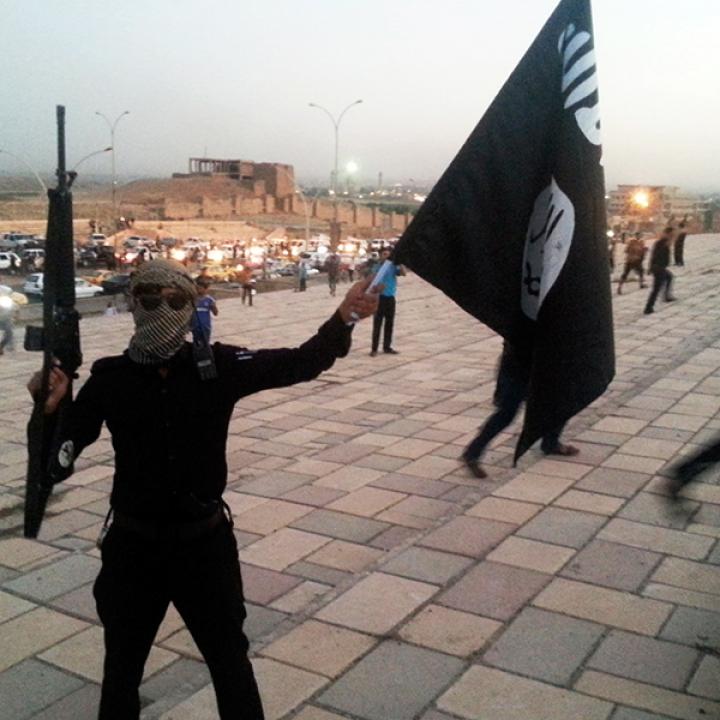

When asked at a March 28th press conference whether he still favored pulling U.S. troops out of Syria, President Donald Trump responded to the question with the statement “I want to get out. I want to bring our troops back home. I want to start rebuilding our nation.” At a more recent meeting of the National Security Council in the White House, Trump outlined a plan to maintain a military presence until troops have removed residual pockets of IS fighters and trained local forces to prevent the group from regaining momentum in the liberated territory.
Either way, Trump’s decision to pull out U.S. troops from Syria “very quickly” represents a significant shift from the administration’s previous policy of maintaining American troops on the ground indefinitely. At this point, the administration may believe that the best strategy is to have no strategy. As such, action (or inaction) in Syria is taken as a response to short-term threats, rather than carried out based on a long-term plan.
Even so, several of Trump’s administration officials have publicly raised concerns about a hasty withdrawal from Syria given the primary mission of defeating IS has not yet been accomplished. In fact, a withdrawal even after IS is officially defeated could give the terrorist organization the breathing room it needs in order to regroup.
IS’s defeat marked a symbolic victory, but the hard part begins now. Currently, IS is merely going through a transition period, shedding territorial aspirations that were once part of its identity. Toppling the group from its de facto capital was only one part of the much larger battle to contain the organization, as IS’s losses in Syria have failed to eradicate its appeal to potential recruits. As a matter of fact, according some estimates, 3,000 fighters and more than 10,000 loyalists are still active on Syrian soil.
As history shows, this manpower is more than sufficient to wage a new insurgency in the currently liberated areas and exploit divisions among the local population, which have been exacerbated by conflict. Any remaining pockets can wait for a more opportune time to reemerge once American troops are extracted, mirroring the aftermath of the Obama administration’s withdrawal from Iraq in 2011.
In 2007, the United States and its allies dismantled al-Qaeda in Iraq when they launched the largest ever coordinated military operation against terrorism. The American campaign, called Operation Phantom Thunder, aimed to expel al-Qaeda from its footholds in Iraq. The campaign was declared successful after CIA Director Michael Hayden stated that al-Qaeda was on the “verge” of suffering a strategic defeat in Iraq, claiming that only a few scattered pockets remained in Iraq’s northern region.
These remnants of al-Qaeda were able to survive the defeat and reorganize, regroup, and reemerge as IS because conditions proved more favorable after the 2011 American withdrawal than before it. U.S. disengagement from the region exacerbated sectarian tensions in Iraq, which continued to destabilize the country for years and led to a weak state that struggled to respond to the new threat of IS.
As IS seeks to rebuild itself and prepare for its next move, the lesson of al-Qaeda should not be lost. While developing in Iraq, IS benefited from existing circumstances: first, the beginning of the Syrian conflict; second, socioeconomic grievances that excluded local populations from accessing services; and third, sectarian tensions that prevented certain sects from obtaining key jobs and climbing social ladders. Both Syria and to a lesser extent Iraq still struggle with these issues, thereby continuing to offer ripe conditions for new local insurgencies. Without U.S. support, local allies would likely be overrun if IS reemerges, forcing Trump to redeploy U.S. troops back into the country.
Moreover, removing U.S. troops would send a negative message to these allies—mainly the Kurds—that the United States has abandoned them. Historically, the United States has played a role in helping its allies when needed. Reneging on this role would undermine future American credibility. In contrast, a sustained U.S. presence can ensure that IS remains constrained until its demise. In addition, it would allow territorial gains to be consolidated and help strengthen the resilience of Syria’s areas liberated from ISIS, which are currently fragile.
Given the political ramifications of the Syrian conflict and previous experiences with al-Qaeda, there is little excuse for repeating the same mistakes in the region. Maintaining an American presence in parts of Syria is necessary to prevent the conditions beneficial to IS remnants. To ensure that the war on IS is not wasted, the U.S. must enact an effective counterterrorism policy. Such policy requires higher-level engagement, more involvement with regional allies who can hold IS-liberated areas, and protection for the Syrian population. If this support is not ensured, an American withdrawal from Syria will likely create space for IS to return.


